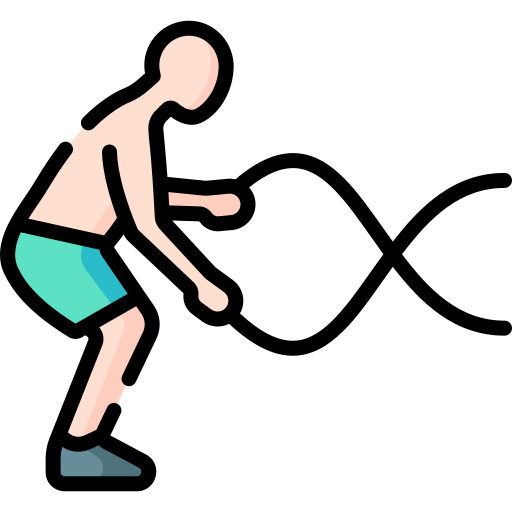Keep your elbow as close to your side as possible while maintaining the arc in the swinging rope.
You'll also be using your forearm muscles (in addition to your upper arm) to pull the rope downward. These forearm muscles are like your shoulder rotator cuff muscles—these "scapular" types, and not your pecs. Rotate your wrists counterclockwise while swinging the rope in an arc towards you. When you're almost there, stop rotating your wrists and try to maintain a vertical line from your hands to your feet.

When you have pulled the rope back, immediately lock out your elbows straight, use your biceps muscle to rotate your wrists back in clockwise direction. While your arms are still locked out, continue to rotate your wrists counterclockwise into a vertical line that runs from your fingers to your chest. Keeping your forearm muscles contracted to lock out your elbows, pull the rope down toward your chest by rotating your wrists in a counterclockwise direction. Allow the rope to return to lockout. Rotate your wrists and pull the rope back. The purpose of this step is for your biceps muscles to work on locking out your elbows, enabling you to maintain a vertical line through your body from the rope to your hands.
🔧 🥕 🦈
Pull back with biceps as you continue to rotate your wrists backward. Slowly but forcefully, continue to pull down on the rope with biceps until the rope touches your chest. The farther the rope touches your chest the more your biceps will have to contract.